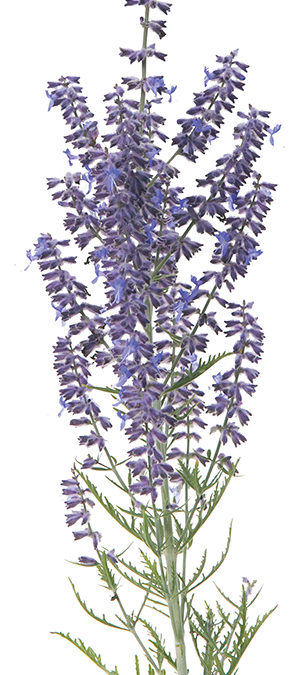Across the Eurasian Steppe great windswept swaths of grassland stretch ever since being turned to pasture by Nomadic peoples centuries ago. Mountains and hills also help to make this a harsh environment. Temperatures swing from freezing to blistering, droughts come and go, the rains come and the winds can rage. This is why the Nomads traveled, going where the weather was best at any given time. Plants, however, cannot move as quickly as people and so must adapt to their surroundings. In the higher elevations of the Steppe is where Russian sage was found thriving by Vasily Perovsky who brought it to the attention of the gardening world.Whether you know it as Russian Sage or Perovskia atriplicifolia, given its heritage, it is no wonder it’s so tolerant of a tough environment. Full sun and dry conditions (after it is established) won’t bother it. Our winters won’t either. It will return each year to take on another season. The soil it lives in doesn’t need to be anything special but it should not hold moisture and heavy mulching is not recommended. Give it some compost when planting, water as you would any other new perennial the first season and after that expect to enjoy it without much care.One of the reasons that gardeners love Russian sage is the hazy look that its airy 3-5 foot spires create. The stems are built to wave in the wind without getting damaged.Its penchant for enhancing nearby perennials such as coneflowers and rudbeckia make Russian sage a beautiful addition to any perennial garden. It’s just as long blooming as they are too.Botanical information about Russian Sage:
Though it is called sage (a common name), perovskia is not a salvia which most sages are. It is, however, a close relative as both salvia and perovskia belong to the same tribe, the (Mentheae) and both are members of the mint family (Lamiaceae). This could explain the aromatic quality of its leaves. Though not minty, the delicate grey-green foliage gives off a clean herbal scent when crushed like that of…sage!

